Follow this link for 2021 NCAA tournament Bubble Watch.
Editor's note: The 2020 NCAA Tournament was canceled on March 12. These results and projections were based on expected completion of conference tournaments and are updated through every team's last remaining game.
We here at Bubble Watch strive to work within the same constraints as the actual men's basketball committee.
Instead of just saying, "This team's good, it should get a bid," we do our level best to treat this question as the zero-sum game it is. To do this, we count each bid in the tournament field and determine how many of those spots are still open.
There are, of course, 68 lines to be filled. Bubble Watch is concerned only with that segment of teams that certainly will, might or could yet earn at-large bids. In other words, "locks," "should be in" and "work to do."
We're listing 36 teams as locks. This includes not only the likes of Kansas and Baylor, but also teams that were discussed here as potential at-large material that then went on to earn automatic bids: Utah State, Liberty, East Tennessee State and Yale.
The "locks" classification does not include teams never mentioned here that have already won automatic bids. Automatic qualifiers like Belmont, Winthrop, Bradley, Hofstra and Northern Kentucky are instead counted under "traditional one-bid leagues," and we're listing 19 conferences there.
Note that this number does not include the Atlantic Sun (Liberty), Southern Conference (ETSU) or Ivy (Yale). Those leagues are already counted, in effect, under locks.
So if there are 36 locks going into the field, and there are 19 additional bids in the process of being awarded by traditional one-bid leagues, this group of 55 teams gives us the size of the bubble right now.
There are 13 spots left in the field of 68. We see 24 realistic bubble teams competing for those bids. It breaks down like this:
Bids from traditional "one-bid" leagues: 19 teams
Locks: 36 teams
The bubble: 24 teams for 13 available spots
Should be in: 6 teams
Work to do: 18 teams
ACC | Big 12 | Big East | Big Ten | Pac-12 | SEC | American | Others
ACC
Locks: Duke, Florida State, Louisville, Virginia
Work to do

All any bubble team can ask for is a shot, and that's exactly what the Wolfpack will receive now. After their 73-58 win over Pittsburgh, Kevin Keatts' men have earned the right to face Duke in the ACC tournament quarterfinals. A win there would be, well, a second win over the Blue Devils at a very convenient moment. Can NC State earn an at-large bid without that victory? It would be close. Even with additional wins on the profile over Wisconsin and Virginia (the latter coming on the road), the Wolfpack still show up as one of the first teams out in a slight majority of mock brackets. A NET ranking in the bubbly mid-50s and a 20-12 record merely reinforce the fact that this could be a close call without a trip to the ACC semifinals.

Big 12
Locks: Baylor, Kansas, West Virginia
Should be in

The Red Raiders played Kansas into the final minute at home before losing 66-62, and now Chris Beard's team has lost four straight. Texas Tech will therefore enter the Big 12 tournament with a so-so 18-13 record, but there's also a beautiful top-30 NET ranking thrown into this profile mix. That combination of dissimilar quantities was netting out to a projected No. 10 seed for Texas Tech before the KU defeat, and even a loss in the Big 12 tournament quarterfinals to an at-large-quality opponent will likely be insufficient to bounce the Raiders out of the field. Beard's men look relatively safe for now.

It took 41 points and a game-winning shot from Austin Reaves, but the Sooners came back from a 20-point deficit and won at TCU. The win leaves Oklahoma with a 19-12 record and a respectable profile. Lon Kruger's men were already being projected as a No. 10 seed before recording the win against the Horned Frogs, and a NET ranking in the safe 40s will raise no flags in the committee room. The Sooners excel at forcing misses in the paint, and Kur Kuath has now recorded 12 blocks in his past 51 minutes of playing time across four games.
Work to do

Shaka Smart's team rose to a No. 11 seed in the mock brackets on the strength of five straight wins. What happens now that Texas has lost by 22 at home to Oklahoma State? What happens is that the Longhorns are going to be very nervous. A NET ranking that was in the high 50s could dip into the perilous 60s in the wake of a Quad 2 loss, and UT will start preparing its talking points accordingly. They're good talking points -- the road wins at Purdue, Texas Tech and Oklahoma -- and they would be strengthened with a good performance at the Big 12 tournament.
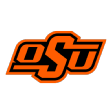
Mock brackets are still mostly unaware of Oklahoma State, which is fine. Said brackets correctly take a skeptical attitude toward any developing bubble situation. The developing situation here is that the Cowboys are 80 minutes away from every mock bracket suddenly saying, yes, OSU is indeed a bubble team. Mike Boynton's team drew Iowa State in the first round of the Big 12 tournament, and, with a win there, Oklahoma State would face Kansas in the quarterfinals. Yes, facing the Jayhawks would be a tall order. Yes, a win over the presumptive overall No. 1 seed would launch the Cowboys into the at-large conversation. Nor would that be inappropriate for a team that's currently 17-14 with a NET ranking in the low 60s and has wins over Texas Tech and Oklahoma, as well as the surprising 22-point victory at Texas.

Big East
Locks: Seton Hall, Villanova, Creighton, Butler
Should be in

Whatever Ed Cooley is doing with this offense, he should keep doing it. Providence ended the season with six straight wins, and over that stretch, the Friars recorded a robust 1.11 points per possession. Those numbers were helped along by Providence's 93-55 win over DePaul in the season finale, a game in which A.J. Reeves, Nate Watson, Alpha Diallo and David Duke all scored at least 16 points. With a top-40 NET ranking and a projected No. 9 seed in the mock brackets, high-scoring Providence is entering the Big East tournament on a high note.

For a second consecutive season, Marquette is staggering to the finish line. With their 88-86 defeat at St. John's, the Golden Eagles closed the regular season by losing six of seven games. In theory, Steve Wojciechowski's men should still be fine. Marquette had a top-25 NET ranking and was being shown as a No. 8 seed in the mock brackets before the loss to the Red Storm. Nevertheless, that projected seed will continue to fall, and a loss in the quarterfinals at the Big East tournament would, at a minimum, raise the question for the first time of whether this team is really going to get a bid.
Work to do

We don't know with certainty that the Musketeers won't make the tournament, but we do know Kamar Baldwin didn't help matters. It was Baldwin who sank the winning 3 for Butler at Xavier on the last day of the regular season. The loss bumped Travis Steele's men down to the No. 7 line in the Big East tournament bracket, where they promptly lost 71-67 to DePaul. That goes into the books as a Quad 2 defeat, which, ordinarily need not be disastrous. A projected NCAA tournament No. 11 seed like the Musketeers, however, cannot afford to take these chances.

Big Ten
Locks: Maryland, Penn State, Michigan State, Iowa, Michigan, Ohio State, Wisconsin, Illinois
Should be in

What a way to earn just your second road win of the season. The Scarlet Knights kept hitting big shots, and they managed to scratch out a 71-68 win in overtime at Purdue. Before the victory, Rutgers was popping up all the way down on the No. 11 line in mock brackets. That seemed unduly dire to the Watch, which is why the Knights and their top-35 NET ranking continued to appear here under "Should be in." Nevertheless, it's true that with a road win against the Boilermakers in their pockets, Steve Pikiell's men can now breathe easy and play loose at the Big Ten tournament.
Work to do

That should do it, right? For a Big Ten team in the conference tournament, there are 13 possible opponents, and only two of those can be classified as a "bad loss" in NET terms on a neutral floor. Indiana faced a member of that scarce 15% in the form of Nebraska and came away with an 89-64 victory. For a 20-12 team that was being projected as a No. 10 seed at tipoff, that should be enough to get the job done even with a NET ranking in the high 50s. Then again, IU can put an even more definite stamp on its selection status with a win over Penn State in the second round.

Looking at Purdue's schedule a week ago, most observers would have predicted that the Boilermakers would go 1-1 in games at Iowa and at home against Rutgers. That's exactly what occurred, it's just that the win came on the road against the Hawkeyes and the loss came at Mackey Arena to the Scarlet Knights. Anyway, 2-0 would have helped. Matt Painter's team will enter the Big Ten tournament with a 15-14 record, and history says that's not good enough. No team has earned an at-large bid with an overall win percentage under .533. Naturally, the committee may break new ground and give a bid to a team with a top-35 NET ranking and wins over Virginia, Michigan State and Wisconsin, to say nothing of the season sweep of Iowa. Still, asking the committee to do something unprecedented is risky.

Pac-12
Locks: Oregon, Colorado, Arizona
Should be in

The rock fight versus UCLA that USC won 54-52 at home was Trojans basketball at its finest. This is an excellent defense, one that limited Pac-12 opponents to 43% shooting on their 2s. The D put Jonah Mathews in position to make that spectacular game-winning 3 and lift USC to a 22-9 record. Whether that profile will earn a No. 9 seed, as pregame projections suggested, or whether Andy Enfield's men can improve their bracket position will depend on what this team can get done at the Pac-12 tournament. The Trojans don't shoot many 3s, and if they take care of the ball (which has been an issue), they can hang with any opponent.
Work to do

In a perfect example of an absolutely essential win that no one noticed, Arizona State closed out its season at home by beating Washington State by nine. Had the Sun Devils recorded a Quad 3 loss in that game, it likely would have been devastating to the at-large chances of a projected No. 10 seed that had previously lost three straight contests. Now, Bobby Hurley's men will go to the Pac-12 tournament with a NET ranking in the 50s and a mindset that ASU has to win once or twice just to be sure about this thing.
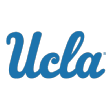
It really could go either way with UCLA. The Bruins were a No. 12 seed in mock brackets before their two-point loss at USC. And while this team's NET ranking is perilously low (in the 70s), Mick Cronin's men actually look like your regular old bubble team in most other respects. Specifically, UCLA scored about as many points as it allowed in conference play in the KenPom No. 4-ranked league in Division I on its way to a 19-12 overall record. The Bruins also look bubbly (high 50s) in terms of strength of record. It could go either way, and a win or two at the Pac-12 tournament would definitely help UCLA's chances.

It would take a surprise for Stanford to make the tournament now, though such would not be the largest surprise in recent selection history. Jerod Haase's team was already perched on the precipice as a No. 11 seed in the mock brackets when the Cardinal went out and lost 63-51 to Cal in the first round of Pac-12 tournament. The game qualifies as a Quad 3 defeat (the Bears were clocking in at No. 148 in the NET at tipoff), and the loss marked the third straight contest where the Cardinal came up short. That very likely will not earn a spot in the field.

SEC
Locks: Auburn, Kentucky, LSU, Florida
Work to do
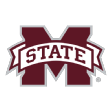
A 20-11 SEC team with a NET ranking in the 50s is going to have to win some games at the conference tournament in order to break into the field of 68. Make no mistake, Mississippi State could win some games in Nashville, Tennessee. Reggie Perry posted a 22-14 double-double against Ole Miss in the Bulldogs' 25-point win in the season finale. That makes a total of 39 points and 30 rebounds over just the past two games for the 6-foot-10 sophomore. Note that MSU is actually the No. 4 seed in the SEC tournament and gets a bye into the quarterfinals, where it will face either Georgia, the Rebels or Florida. A Quad 1 win against the Gators would get the Bulldogs closer to their goal.
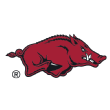
Defeating Vanderbilt 86-73 on a neutral floor will not allow Arkansas to vault over perhaps six to eight teams into the NCAA tournament field, but it does give the Razorbacks the opportunity to play South Carolina. Fine, beating the Gamecocks won't be sufficient either, but win there and the Hogs get LSU in the quarterfinals. So, right, Eric Musselman's team does have a way to go, but at 20-12, Arkansas is at least still in this thing.

American
Locks: Houston
Work to do

Strictly speaking, Wichita State's beating up emphatically on Tulsa at home is not supposed to help its profile. Despite contending for an outright American regular-season title, the Golden Hurricane entered the contest ranked No. 76 in the NET, making this game, rather incredibly, a Quad 3 affair for the Shockers. Still, a WSU team listed as being both barely in and barely out of the tournament field by various mock brackets does prefer an easy win over any kind of loss. Barring a bad defeat to an inferior opponent at the American tournament, Wichita State likely will remain in suspense all the way to Selection Sunday. A NET ranking in the 40s and a 23-8 record wherein the best NET win was at Oklahoma State make this profile a close call.

On an evening when Jarron Cumberland was slowed by a foot injury and required 16 shots to get to 20 points, Cincinnati persevered and won 64-63 at home over Temple. The victory spared the Bearcats what would have been a rather inconveniently timed Quad 3 loss. Cincinnati is envisioned as one of the last teams in the projected field, and with the American tournament offering only Houston as an opponent guaranteed to furnish a Quad 1 opportunity, it's not clear if John Brannen's team can climb unmistakably out of this uncertainty. Instead, the tension might continue. (Wichita State might or might not be in the top 50 of the NET on a given day and thus be able to give Cincinnati or any other opponent a Quad 1 game at Dickies Arena.)

It appears any at-large hopes cherished by Memphis might be done in by a combination of the Tigers' season to date (the weightiest factor in this mix, to be sure) and the state of the American in 2020. If this were last year, Penny Hardaway's team would look forward to the conference tournament knowing it could get a shot at an NCAA tournament No. 3 seed in the making (Houston last year). Beating an opponent like that will spruce up your profile, even at the 11th hour, but the American doesn't have many of those opponents this season. The Cougars might be on track for a No. 8 seed, and that's as good as it currently gets in terms of level of competition. The Tigers are listed variously as "First four out" and "Next four out," and therefore need quality wins. The American bracket might not cooperate there even if Memphis does.

Frank Haith's team won a piece of the regular-season American title along with Houston and Cincinnati, and now Tulsa is seeking its fair share of at-large consideration. Could the Golden Hurricane get the job done with a run to the American title game? It doesn't look encouraging, but, hey, the bubble's nothing if not filled with surprises. As mentioned previously at the Watch, Tulsa carries an aberrantly low NET ranking (in the high 70s) that would require the committee to venture outside precedents set in 2019 in the first year of the metric's use. That bar could be lowered this year anyway, though, with a team like UCLA. So, who knows, with its wins at home over Houston and Wichita State, perhaps Tulsa can persuade the committee to bend precedent in the Hurricane's favor.

Others
Locks: Gonzaga, San Diego State, Dayton, BYU, Utah State, Saint Mary's, Liberty, East Tennessee State, Yale
Work to do

Richmond finds itself in the suspenseful position of being shown in the NCAA tournament by some mock brackets and out of the field by others. In other words, it's close, and the Spiders' bracket in the Atlantic 10 tournament could allow them to gain just enough ground to make the cut. A potential quarterfinal against Davidson, for example, would be a high Quad 2 opportunity, as would a possible semifinal against Rhode Island. Wins there could be enough for a team with a top-40 NET ranking and a 24-7 record highlighted by the 10-point neutral-floor win over Wisconsin (though Badgers fans hasten to point out that the contest was played before Micah Potter became eligible).
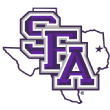
The mock brackets might not be listening, but the Lumberjacks really want to keep this conversation alive. Kyle Keller's group closed out the season with 15 straight wins to finish at 28-3. The team's NET ranking is very low, which isn't proving to be a deal-breaker for UCLA. The Jacks beat Duke at Duke. Worst of all, from the committee's point of view, SFA's number for strength of record (top 45) is at odds with its NET ranking. As they say at NASA (or more precisely, in movies the Watch has seen about NASA), is this an instrument problem?

So, you want to predict college basketball events? Six days after Northern Iowa took the floor at Drake's home arena and destroyed the Bulldogs by 27, the Panthers took the floor at a neutral venue in the Missouri Valley Conference tournament quarterfinals and lost to the same team by 21. Friday's loss marked an abrupt fall from grace for a UNI team that seemed on track if not for an at-large bid then at least for a deserving at-large profile. Instead, Ben Jacobson's team will wait for over a week to hear the committee's decision on a team with a 25-6 record, a win at Colorado and a NET ranking in the 30s -- more precisely, a NET ranking that was in the 30s before the loss to the Bulldogs.
